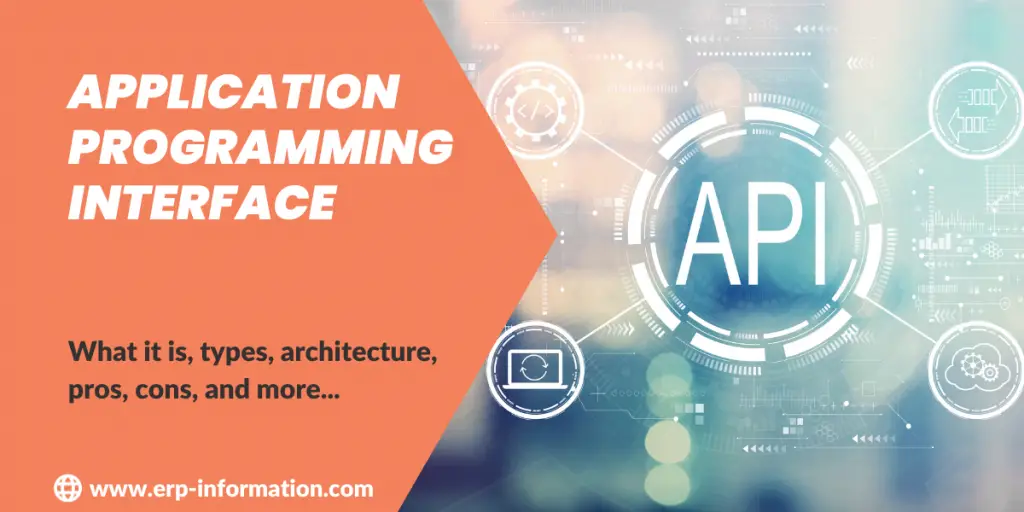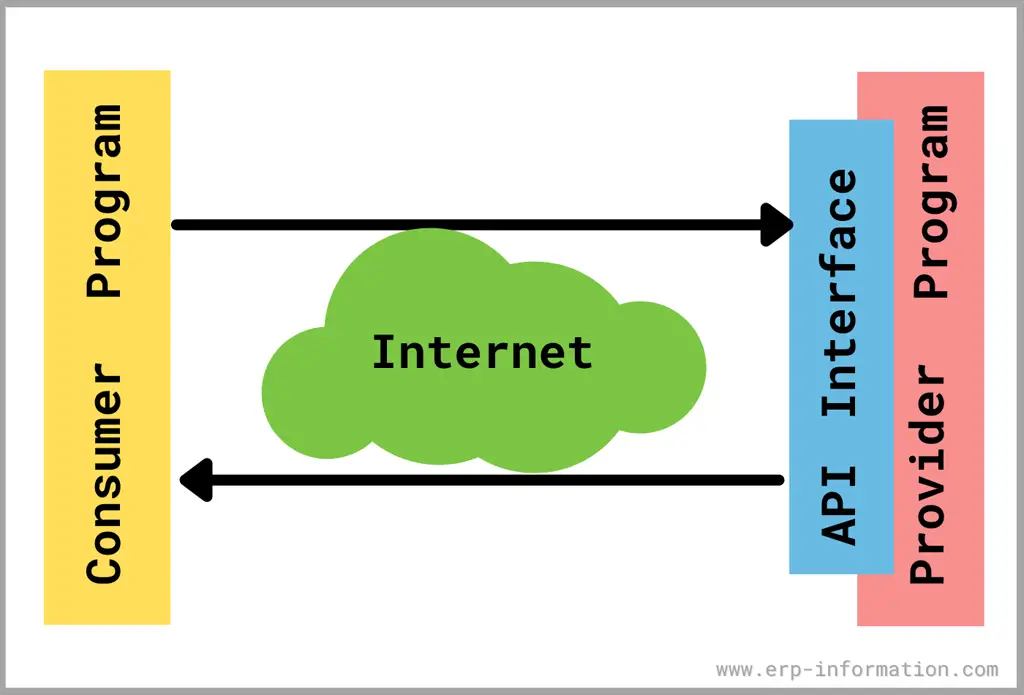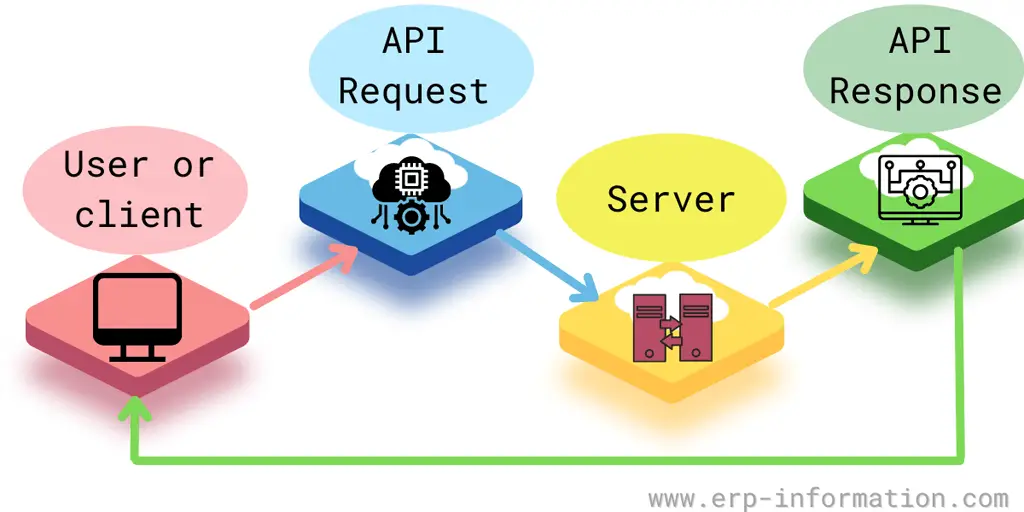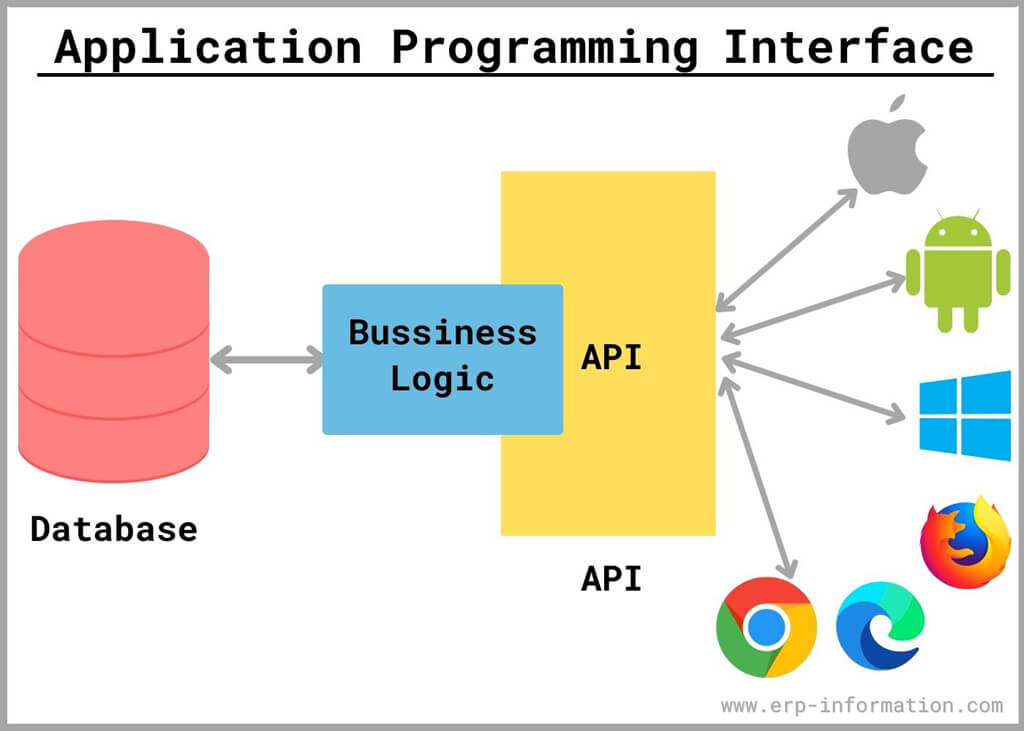An Application Programming Interface, also known as an API, is a set of programming instructions that allow the software to communicate with other software.
It can be used for various purposes, such as retrieving data or triggering specific actions. In addition, companies commonly use them to provide access to their services and products from external applications.
This blog post will discuss the advantages and disadvantages of using APIs and their examples.
What is API?
This interface is a set of instructions that allow one computer program to talk to another.
They are often used when developing mobile apps, but they can also be used to connect two different websites or integrate with third-party software.
They are an essential part of the development process and can help you build better products faster. They’re not always easy to use, but it’s worth the time investment if you want your app to work seamlessly with other software.
When developing mobile apps, it is needed to connect the app with other software or hardware that it will interact with. It allows two programs to communicate over a network and exchange information in real-time via requests and responses.
It bridges your codebase for business logic (user authentication) and external services like Google Maps or Facebook login.
Who provides an application programming interface?
Application Programming Interfaces are provided by different companies and organizations depending on what they’re trying to do with them.
For example, Google provides APIs for its search engine so that developers can integrate them into their websites and apps. On the other hand, Facebook allows developers to access its user data to create social media integrations.
They are also provided by many other organizations like Amazon (which gives them for their AWS cloud computing service) or Apple (Siri). These companies ensure that there is always something new to do on your phone or computer. As a result, you can do more things with less effort!
Architecture
An application service provider is made up of 3 primary parts.
- Customer: Who makes the request
- Server: The device that answers the request
- Mediator: The application or device that sends the request to the server and gets the answer from it
Types architectures
RESTful (Representational state transfer)
This is probably the most common type, and it uses standard web protocols like HTML, XML, and JSON. It’s easy to use, and plenty of libraries are available to help you get started.
SOAP
SOAP uses the Simple Object Access Protocol (SOAP), allowing applications to communicate using XML messages. They’re not as common as RESTful, but they offer more features and functionality.
RPC
RPC stands for Remote Procedure Call and is a type that allows you to call functions on remote servers. This can be useful for integrating with legacy systems or services that are not accessible over the Internet.
Pros and Cons of API
Pros/Benefits of Application Programming Interface
It offers several benefits for both developers and businesses:
Increased Visibility and Traffic
First, it allows you to share your data and functionality with a broader audience, increasing traffic and visibility for your website or app.
Seamless Integration
It makes it easy to integrate with other applications and services, saving you time and money.
Increased Efficiency
It allows you to access data and functionality without navigating multiple menus or screens. This can speed up the development process and make your app or website more user-friendly.
Easier Maintenance
It reduces the amount of work needed on the back end, making maintenance and updates more effortless and less time-consuming.
Reduced Costs
It allows developers to reuse code and functionality in multiple applications, saving time and money.
Improved Customer Experience
It makes it easier for users to access your data and functionality across multiple devices or platforms, improving the user experience and increasing customer satisfaction.
Cons
There are some disadvantages to using Application Programmable Interfaces:
Increased Complexity
First, they can be complex and challenging to use, making them challenging for novice developers.
Limited Functionality
They may not have all the functionality you need, requiring additional development work.
Dependency on Third-Party Services
If it depends on a third-party service, your application will also be unavailable.
Security and Privacy Risks
They can pose security and privacy risks if they’re not implemented correctly. Therefore, it’s essential to carefully consider these risks before using them in your application.
Examples
AdWords from Google
This allows advertisers to create ad campaigns on their computers without going through Google AdWords’ interface or using any additional software programs.
Twitter Inc., Facebook Inc., and Instagram LLC
These are examples of social media APIs that allow third-party developers to access information about users without logging into each service individually via a web browser or mobile app messenger client.
YouTube
YouTube allows developers access to video data such as title, description, duration, and uploader information without logging in to each service separately or using any additional software programs like Adobe Premiere Pro CS (which can also be used for editing live streams).
Amazon Web Services (AWS)
Let developers interact with their services to create new ones based on what’s already available through existing applications.
If you wanted an easier way of uploading photos onto Instagram but didn’t have the time or resources necessary, then using AWS would allow someone else’s code need only include specific commands explicitly related to image files which makes it easier than ever before!
Types of API
There are three main types,
Data APIs
These allow you to access data from different sources, such as databases or web services. They’re often used for retrieving information or performing calculations.
Functionality APIs
These provide functionality that you can’t get from regular websites or applications. For example, they might allow you to manage your account or purchase items online.
Processing APIs
These allow you to do things with data that you wouldn’t be able to do independently. For example, you might convert it from one format to another or compress it for storage.
Types based on the nature of the use case
- Open (Public) APIs: They are available to the users with minimum restrictions. Users can access these with the HTTP protocol.
- Partner APIs: These are technically the same as Open APIs with restricted access.
- Internal (private) APIs: They are hidden from external users. They are available to use within the company.
- Composite APIs: allow developers to access several endpoints in one call. These help to reduce server load and improve application performance.
Application Programming Interface protocol types
They use a few different protocols, but the most common ones are HTML, XML, and JSON. They are used to define how data is formatted when exchanged between systems.
HTML
HTML is used for web-based APIs, and it allows you to embed images, videos, and other types of content in your messages. It’s easy to use, but it can be restrictive since you’re limited to what you can include on a web page.
XML
XML is more versatile than HTML and creates custom tags and attributes. This makes it a popular choice for SOAP APIs, but it can be more complex to use.
JSON
JSON is a lightweight alternative to XML, and it’s easy to read and write. It’s famous for RESTful APIs because it’s fast and efficient.
Difference between API and Web service
Both the application programming interface and Web service are almost similar. But, then also, there are slit differences between them. So let us have a look at that.
| API | Web Service |
| All APIs are not web services. | It supports HTTP/ HTTPS protocol and request & response headers of URLs. |
| It supports both XML and JSON | It supports only XML. |
| It uses all styles of communication. | It uses only three communications styles XML-RPC, SOAP, and REST. |
| It supports HTTP/ HTTPS protocol and request & response headers of URL. | It supports only the HTTP protocol. |
FAQs
What are the two major categories of API?
A public and an internal API are two distinct types based on who has access. Furthermore, a monolithic cannot also be a microservice.
What is the most important in API?
The most important aspects of an API are security, documentation, validation, and testing. These are crucial focus points for designing and building a successful API for any use case.
Conclusion
Application Programming Interfaces allow developers to interact with and create new services based on what’s already available through existing applications.
This post has outlined the advantages and disadvantages of APIs and some examples.
We Hope this gives you some insight into Interfaces and how they might be able to help you in your business endeavors!



